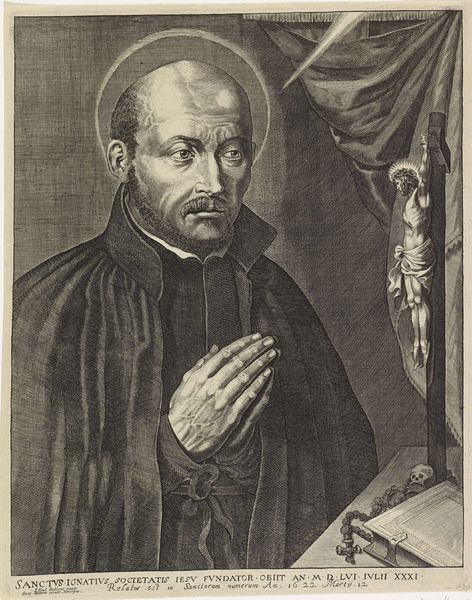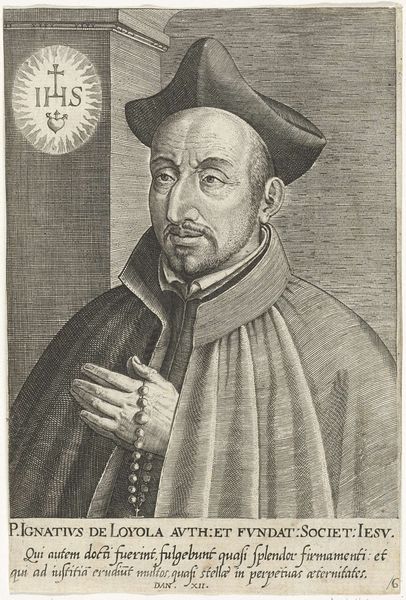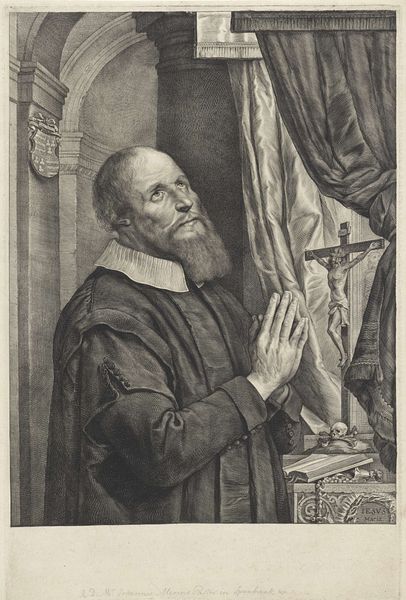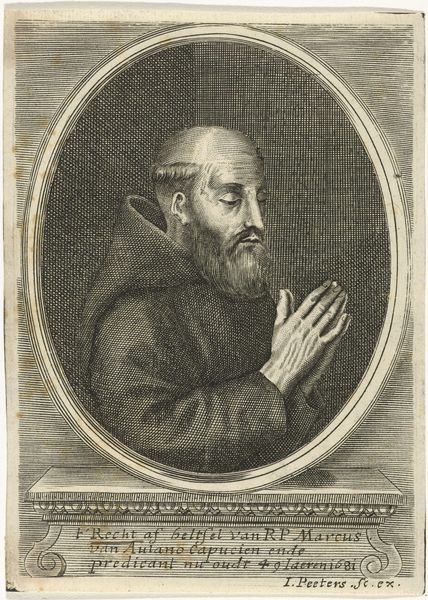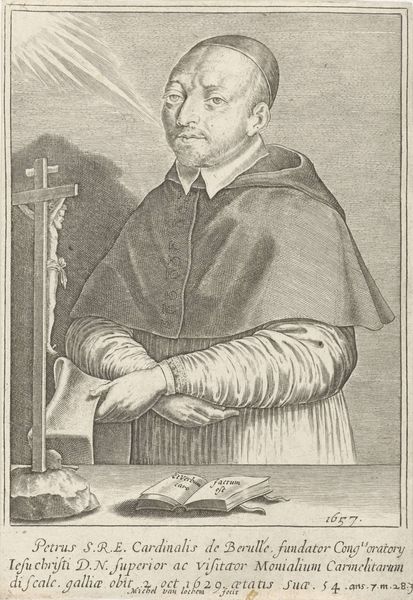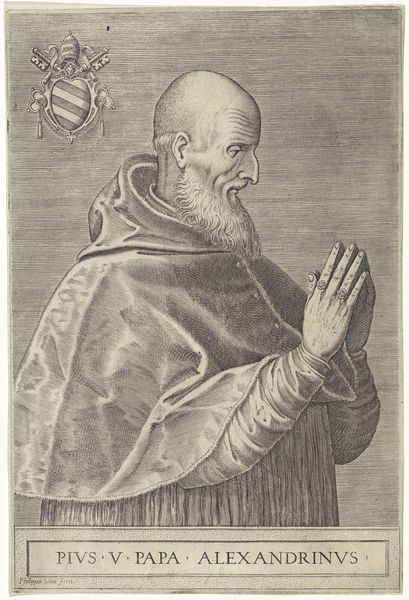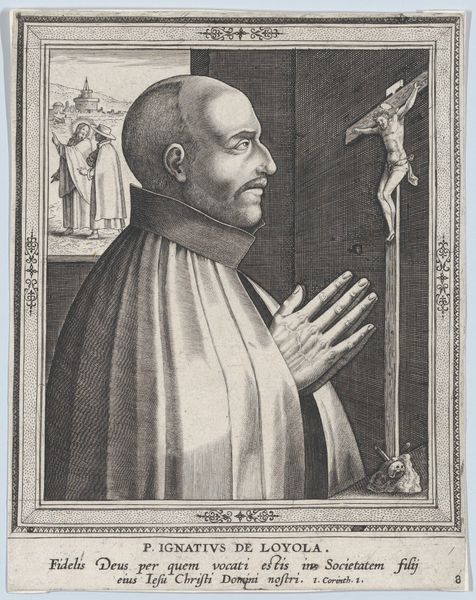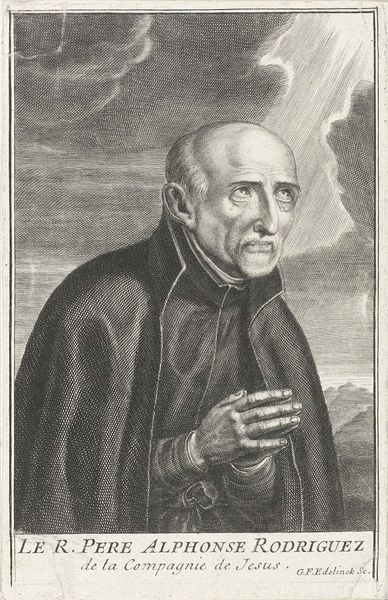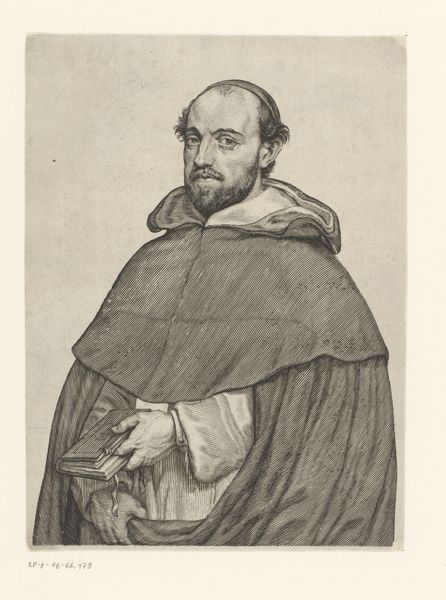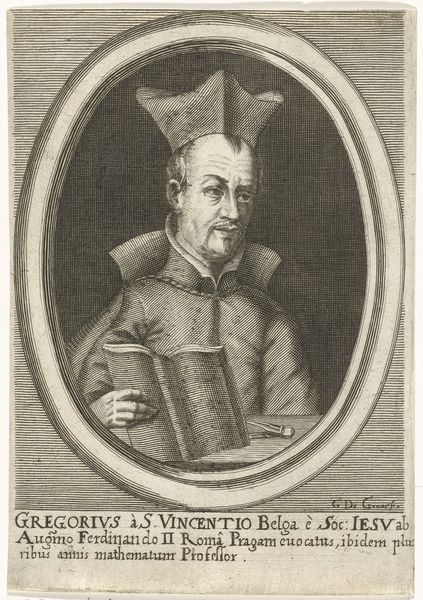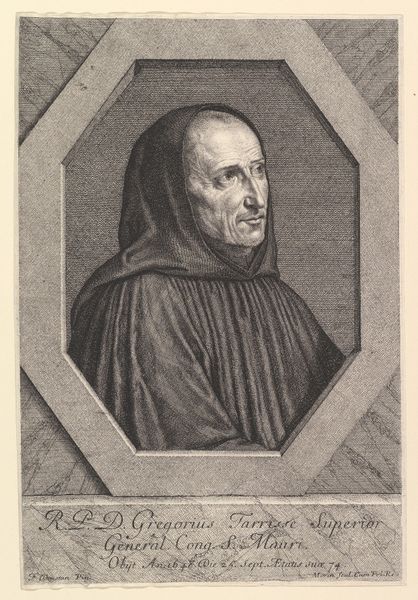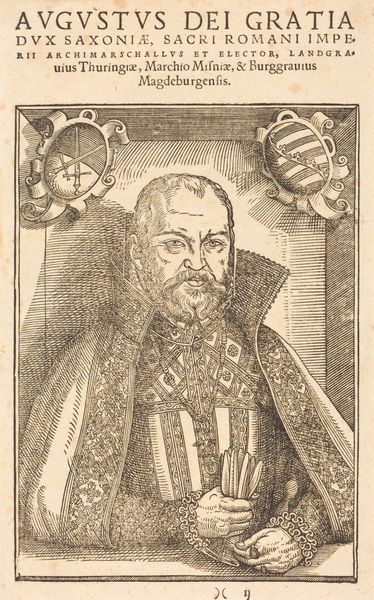
Saint Ignatius of Loyola, praying towards the left with a crucifix, a rosary, a book, and a skull on the table in front of him 1621
0:00
0:00
drawing, print, intaglio, engraving
#
portrait
#
drawing
#
baroque
# print
#
intaglio
#
history-painting
#
engraving
Dimensions: Sheet (Trimmed): 12 13/16 × 10 3/8 in. (32.5 × 26.4 cm)
Copyright: Public Domain
Curator: We are looking at a work made in 1621 by Lucas Vorsterman I. This is an engraving, an intaglio print, portraying Saint Ignatius of Loyola. Editor: It strikes me as an image steeped in somber reflection. The contrast of light and shadow emphasizes Loyola's contemplative stance amidst symbols of mortality and faith. There's a palpable sense of the baroque theatricality attempting to provoke an emotional response. Curator: Indeed, observe the meticulous detail Vorsterman achieves through the engraving technique. Note the dense network of lines which form the tonality and texture, animating Loyola’s face and the draped fabric behind him. He's praying, right, with the objects arranged upon the table beside him? A crucifix, skull, book, and rosary... Editor: The chosen symbols definitely provide cues toward a certain reading, absolutely. I immediately think about Loyola's role in the Counter-Reformation and the spiritual exercises he developed as a means of reinforcing Catholic doctrine against the rise of Protestantism. His intense piety could definitely also be seen as authoritarianism. Curator: Of course, Vorsterman, being from a Catholic center such as Antwerp, positions Loyola within the visual language of sanctity and erudition. His physical features, with a high forehead and receding hairline, mirror existing paintings of Loyola created soon after his death—these were consciously modeled after portraits of other intellectuals. Editor: The halo, too, can’t be ignored. And speaking of that table arrangement—those symbols of vanitas—book, rosary and skull—appear very deliberately arranged for maximal didactic effect. But does that, perhaps, overdetermine its viewing? Where's the possibility of seeing Loyola outside the paradigm of the church's official stance on his sanctity? Curator: The formal elements provide structure for understanding Loyola. Notice how he and Christ face the same direction; the implied diagonal is a powerful compositional component which can provide a clear, uncluttered experience to the viewer’s gaze. But maybe you’re pointing towards how these forms, as they are replicated through print culture, create larger networks of power? Editor: Exactly! Vorsterman's print doesn't just depict a historical figure; it actively participates in the construction of Loyola's image within specific ideological and historical parameters. I just keep coming back to those stark contrasts of black and white. How does the style ultimately frame or even determine our reading? Curator: Well, analyzing these formal elements enables a richer, more nuanced engagement with works like this. Editor: For me, this perspective encourages deeper reflection on art’s cultural implications and historical meanings.
Comments
No comments
Be the first to comment and join the conversation on the ultimate creative platform.
